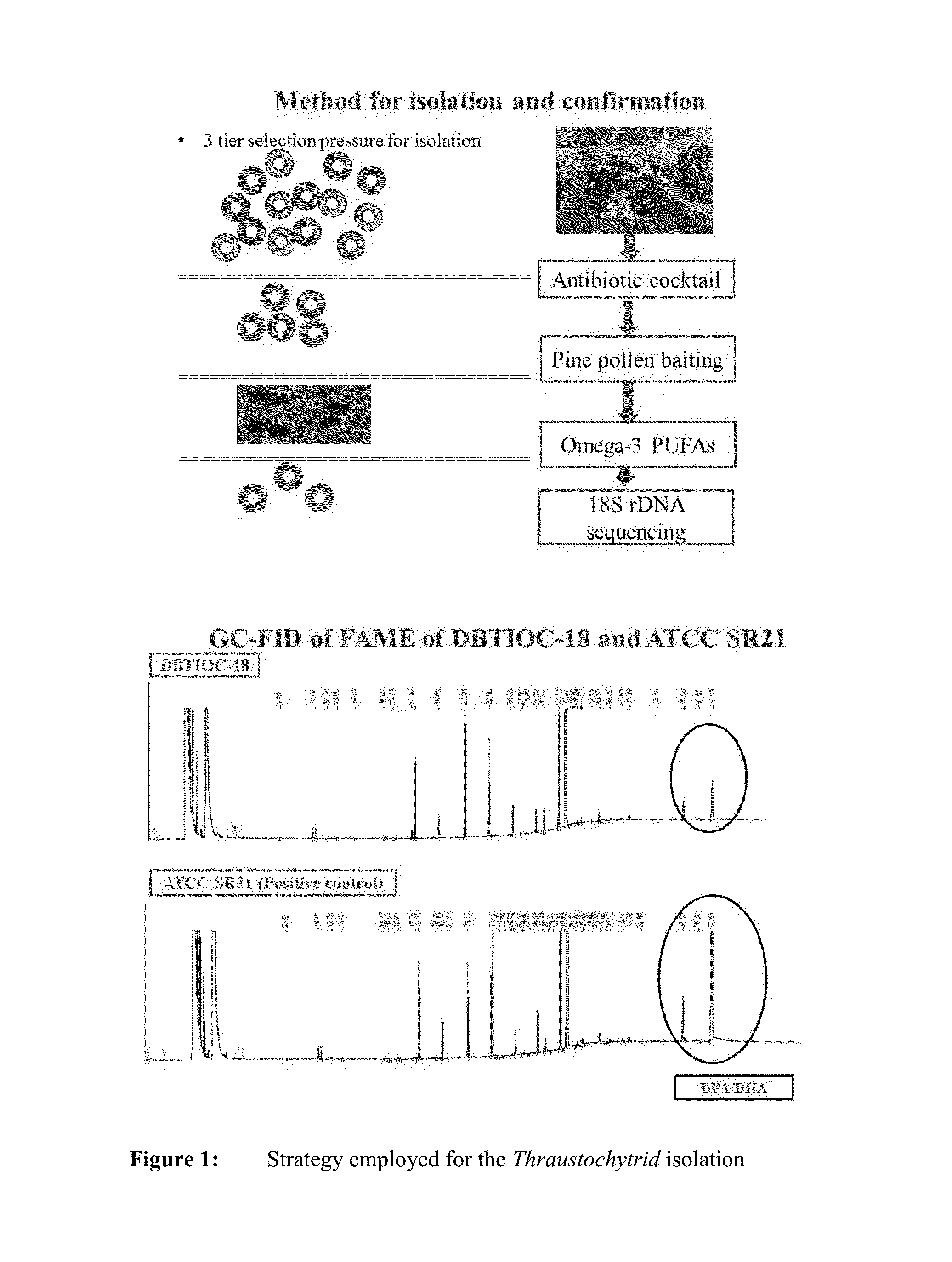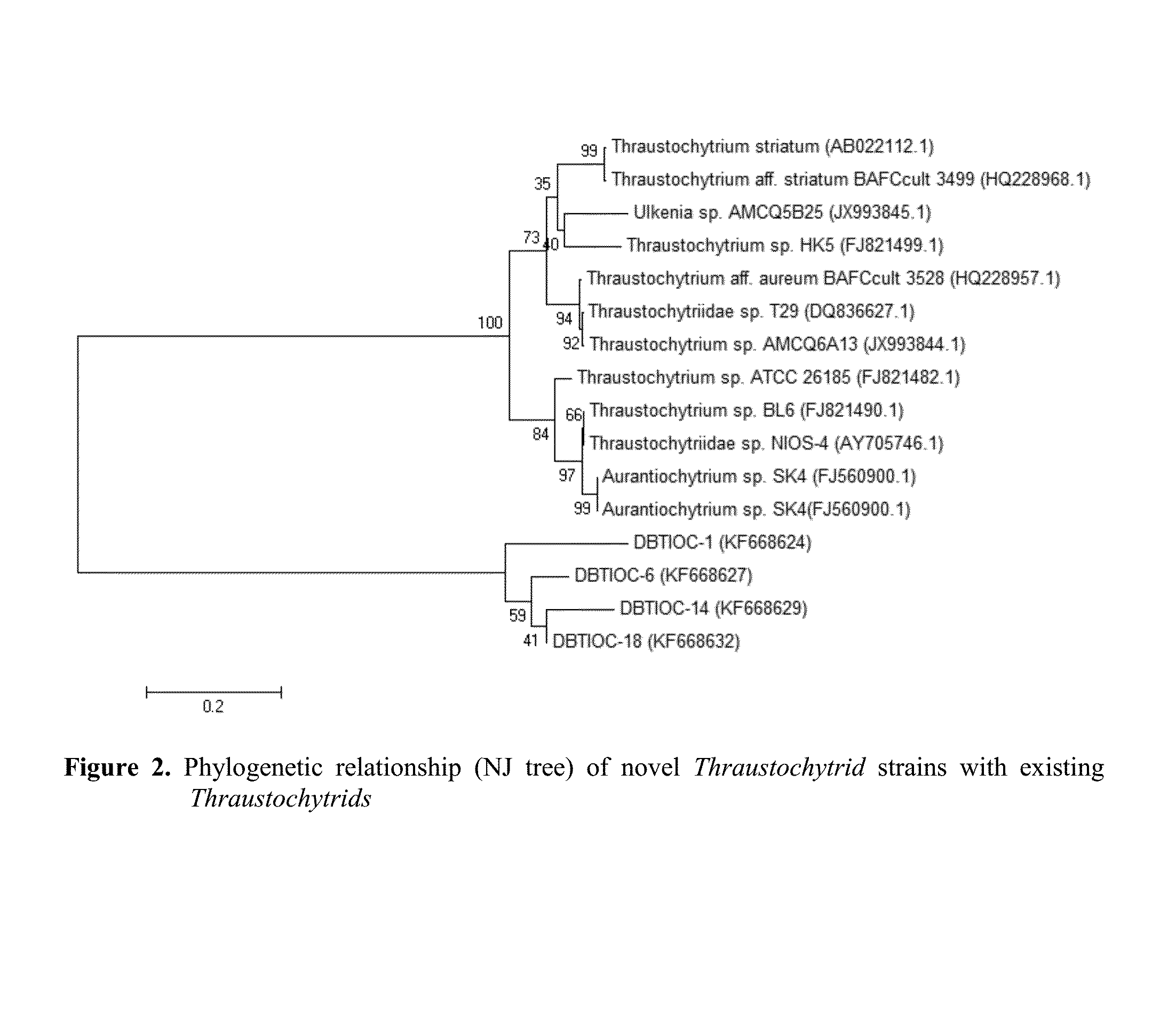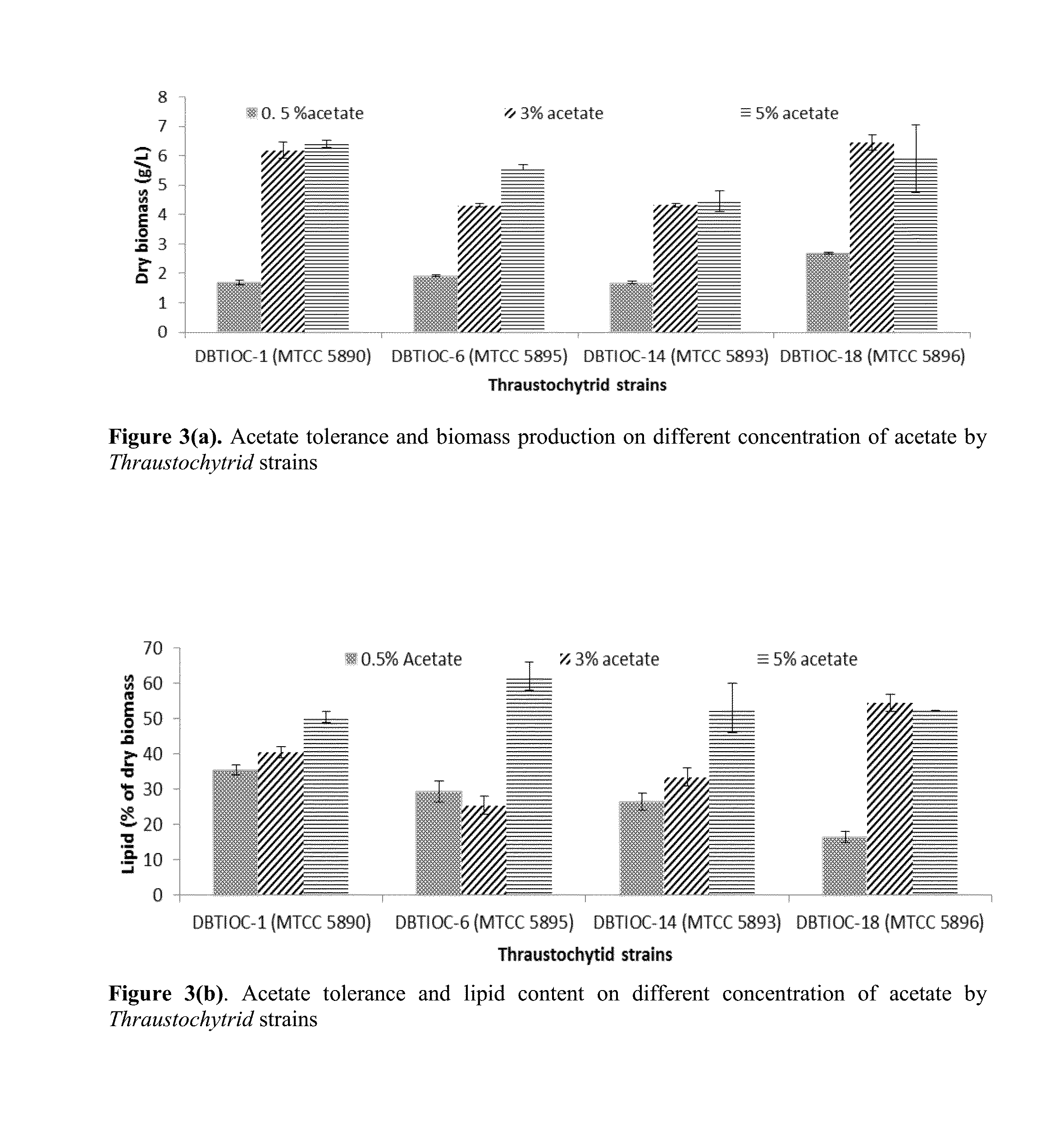Thraustochytrid based process for treating waste effluents
a technology of thraustochytrid and waste effluent, which is applied in the direction of biological water/sewage treatment, contaminated groundwater/leachate treatment, waste water treatment from gaseous effluent, etc., can solve the problems of affecting the profits of the company, affecting the biodiversity of the ecosystem, and affecting the degradation of water and soil ecosystems, etc., to enhance the lipid content and enhance the dha content
- Summary
- Abstract
- Description
- Claims
- Application Information
AI Technical Summary
Benefits of technology
Problems solved by technology
Method used
Image
Examples
example 1
Isolation of Thraustochytrids from Indian Marine Biodiversity
[0198]Large number of samples (Soil, water, degraded leaves etc) was collected from Indian marine sites in March 2013 over 30-35 km stretch in mangrove areas of Ribandar across Mandovi-Zuari mangroves (Collection Coordinates: S15°29′57.39″,E73°52′6.13″, Panjim Goa). Physical parameters such as geographic position, pH, temperature and humidity of the collection site were recorded with GPS, pH meter, thermometer and hygroscope respectively. 100 μl of selective antibiotic mixture was added into each falcon and samples were stored in dry ice packs and brought to lab along with natural sea water within 24 hours for processing. Direct plating or baiting method were the two protocols followed for the isolation. Soil samples were diluted 1000 times or leaf samples were washed, with sterile sea water before spreading on agar plates. Water samples were directly spread on agar plates. These agar plates were supplemented with selectiv...
example 2
Molecular Characterization of Isolated Thraustochytrid Strains
[0199]For genetic identification of the strains, 1 ml of 5 day old culture was harvested and genomic DNA was extracted according to the guidelines described in DNeasy blood and tissue kit (Qiagen, USA). Genomic DNA was used for PCR amplification of 18S rRNA gene using primers T18S1F 5′-CAACCTGGTTGATCCTGCCAGTA-3′ and T18S5R 5′-TCACTACGGAAACCTTGTTACGAC-3′ (Honda et al. 1999). 25 μL PCR reaction was setup having 12.5 μL PCR master mix (Applied Biosystem, USA), 0.5 μL each primer (T18S1F, T18S5R), 1 μL genomic DNA, 10.5 μL milliQ water. PCR program included 3 min at 94° C. for initial denaturation, 45 sec at 94° C. for final denaturation, 30 sec at 64° C. for annealing, 2 min at 72° C. for extension, 10 min at 72° C. (final extension) for 30 cycles. PCR product was purified from 1% agarose gel using QiAquick gel extraction kit (Qiagen, USA) and mixture for PCR product and primers was sent to Macrogen (South Korea) for sequenc...
example 3
Screening of Thraustochytrid Strains for their Ability to Acetate Utilization and Acetate Tolerance
[0200]Different concentration of acetate such as 5 g / L, 30 g / L, 50 g / L or 100 g / L were added in the nutrient rich medium as sole carbon source or mixed with other carbon sources. pH of acetic acid was raised to 7 with sodium hydroxide followed by addition of 10 g / L yeast extract, 1 g / L peptone. 18 g / L artificial sea salt was added in the medium to mimic 50% strength of sea water. Residual acetate was measure by HPLC and it was found that maximum acetate utilization does not go beyond 15 g / L in shake flask culture. However strain tolerance towards higher concentration of acetate was tested up to 50 g / L or 100 g / L. Strain DBTIOC-18 (MTCC 5896) performed better on acetate as carbon as compare to other strains irrespective of amount of acetate in the medium (FIG. 3).
PUM
| Property | Measurement | Unit |
|---|---|---|
| Fraction | aaaaa | aaaaa |
| Fraction | aaaaa | aaaaa |
| Fraction | aaaaa | aaaaa |
Abstract
Description
Claims
Application Information
 Login to View More
Login to View More - R&D
- Intellectual Property
- Life Sciences
- Materials
- Tech Scout
- Unparalleled Data Quality
- Higher Quality Content
- 60% Fewer Hallucinations
Browse by: Latest US Patents, China's latest patents, Technical Efficacy Thesaurus, Application Domain, Technology Topic, Popular Technical Reports.
© 2025 PatSnap. All rights reserved.Legal|Privacy policy|Modern Slavery Act Transparency Statement|Sitemap|About US| Contact US: help@patsnap.com



